Creativity is crucial for human survival; it’s the spark that flares up innovation in people and leads them to dig deeper into novel ideas, creations, and discoveries. Creativity and imagination assist our discovery of new areas and perspectives. The truth is that people who embrace vision, creativity, and artistic manifestation are usually devoted explorers of their thoughts.
The ability to imagine things not seen as though they were and bring them to life via creativity is a rare gift nature blessed humans with. However, some people possess a more brilliant imagination and creativity than others. Over 20 fascinating insights into creativity are presented here, showcasing its dynamic role in nurturing imagination and inventive thinking.
Key Creativity Statistics At A Glance
Eye-opening Creativity Facts and Statistics
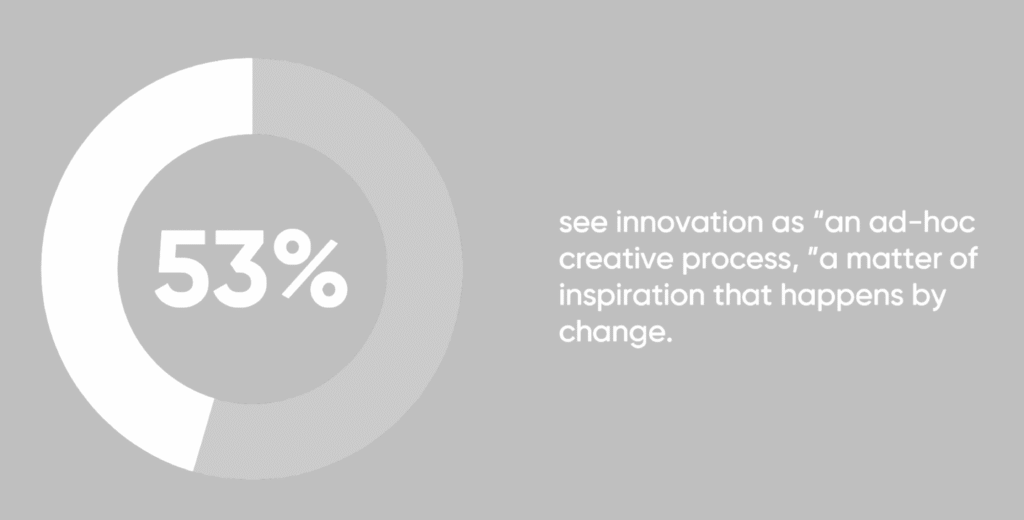
1. Citizens of Britain aren’t the only ones struggling to nurture their creative sides. Over the globe, more than 52% of people think creativity doesn’t get the respect and recognition it deserves. A whopping 70% in the US also believes so.
2. A survey found that 90% of these business leaders believe nurturing creativity is essential for staying competitive and innovative in today’s fast-paced market. This is music to any creative’s ears.
3. More than half the global population thinks creativity doesn’t deserve recognition and respect. It is a shame because novel thinking and fresh ideas are precious assets in today’s rapidly evolving world.
4. Approximately 50% of survey participants said creativity is only essential in education.
5. However, many grown adults – a whopping 88% – agree that imagination drives excellent ideas and innovative solutions.
6. Another survey by the Harvard Business Review revealed that 77% of entrepreneurs credit their imagination and creative thinking with their success.
7. A survey by the World Economic Forum discovered that a massive percentage of prominent business leaders (about 90% of them) said that nurturing creativity is essential for their businesses to stay one step ahead in today’s crazy competitive marketplace.
Must-know Creativity Facts and Statistics
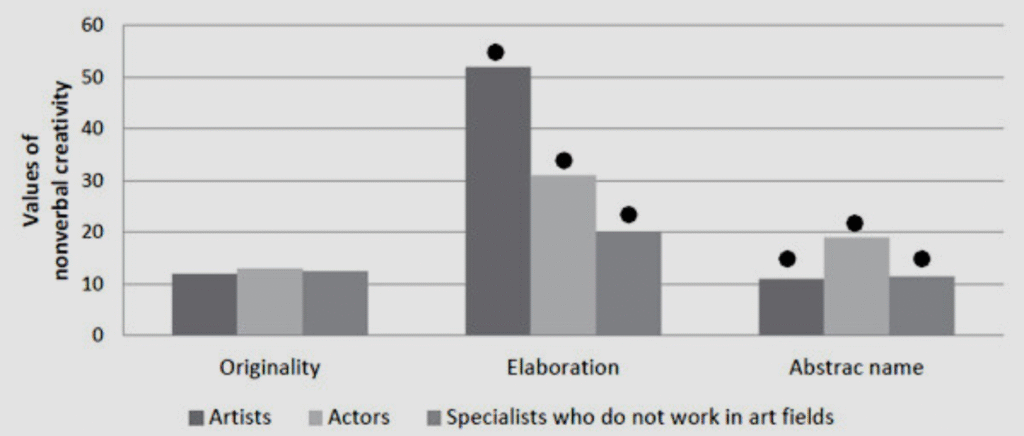
8. Before the global pandemic crept in, the creative industries were an absolute economic powerhouse in the UK. In 2019 alone, these industries pumped a massive £116 billion into the Gross Value Added.
9. Between 2011 and 2019, this creative sector grew at twice the rate of the overall UK economy.
10. Even during the height of the craziness pandemic, the creative industries kept trucking and creating opportunities here and there, providing jobs for around 2.3 million people in one year.
11. Self-employment is very common in these creative industries, making up about 32% of all jobs, which is much higher than in other sectors, where it’s only around 16%.
12. The vast majority of creative companies are tiny operations! In 2019, 95% of creative companies were classified as micro-businesses with fewer than ten employees.
13. In 2019, the UK could boast an impressive tally of approximately 300,000 businesses in the Creative Industries category. That comprised over one in every eight businesses nationwide, around 11.8%.
14. When you look at where all these creative enterprises are setting up shop, London is the hotspot. London is home to a hefty 34% of creative enterprises.
15. But it’s not just London—the greater South East area, including London, the South East, and the East of England regions, houses a massive 62% of these creative ventures combined.
16. Head north of England, and you’ll find 13% sprinkled across the North East, North West, Yorkshire, and the Humber.
17. The Midlands areas of East and West England play host to 10%. And even Wales, Scotland, and Northern Ireland have a creativity percentage of 2%, 5%, and 1%, respectively. It’s like creativity hubs, a trend for the entire UK.
Creativity Statistics At the Office

Have you ever let your mind wander and daydream a bit? Turns out that can do wonders for your work life, too.
18. Research across different professional fields found that 28% of employees use daydreaming as a helpful tool.
19. More than half of the folks surveyed said they felt way more connected and engaged with their work when they daydreamed during breaks or at lunch.
20. These findings clarify that daydreaming is more than a mental check-out. 81% of respondents believe their daydreams help them explore new perspectives and ways of thinking, ultimately making them more productive on the job.
21. Over half the participants, 56%, said daydreaming amplifies their creativity at work.
22. To support these observations, a 2010 study by IBM emphasized just how crucial imagination is in ensuring long-term success for corporations.
23. Even with all those fantastic benefits of daydreaming and flexing creative muscles, not everyone can do it at work. According to this massive Gallup study involving 16,500 workers, only about a third of them, 33% to be exact, feel like they’re given real opportunities to express their creativity over a year. A lot of untapped creative potential is waiting to be unleashed in the workplace!
24. About 70% of folks believe creativity is essential for economic growth and success.
25. Creativity in business is making serious waves, and the numbers back it up. By April 2021, there were a mind-boggling 37,900,000 Google search results all about creativity statistics in business settings. That’s a massive figure and a clear sign that organizations realize the value of fostering innovation and fresh thinking.
Additional Creativity Office Statistics
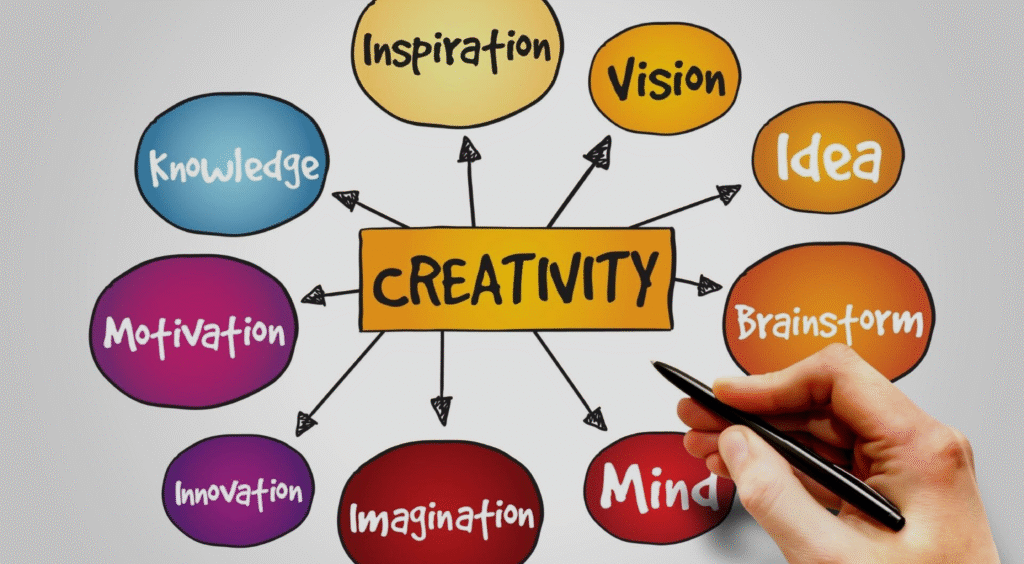
26. How CEOs view creativity as a top-notch leadership quality is fascinating. A hefty 60% of CEOs consider it crucial for workplace success.
27. But here’s where it gets a bit tricky. Despite this recognition from the top industry players, 35% of workers still feel they aren’t getting enough opportunities throughout the year to flex those creative muscles.
28. And it’s not just CEOs and regular employees who are itching to get more creative—even college-educated people over 25 are hungry to boost their innovative abilities. 78% of people over 25 with college degrees desired to enhance their creative skillset.
29. You know what’s disheartening? Out of those 16,500 employees surveyed, only a tiny minority, just 35%, ever get to unleash their creativity in the workplace. That means two-thirds of the workforce is missing out on opportunities to bring fresh, innovative ideas. It highlights how critical it is for companies to prioritize fostering more creative environments where everyone’s voice and perspectives are valued and encouraged.
30. Did you know 72% of the creative workforce is highly qualified? We’re talking about holding a university degree or higher level of education, which is way above 45% of the overall economy.
31. A mind-blowing 83% of creative folks work in “higher level occupations” as managers, directors, professionals, and technical gurus. That’s nearly double the percentage across the broader UK workforce.
32. Here’s an interesting tidbit: over 29% of creative workers are freelancers, surpassing the 15% national average across the UK.
Creativity Statistics at the School
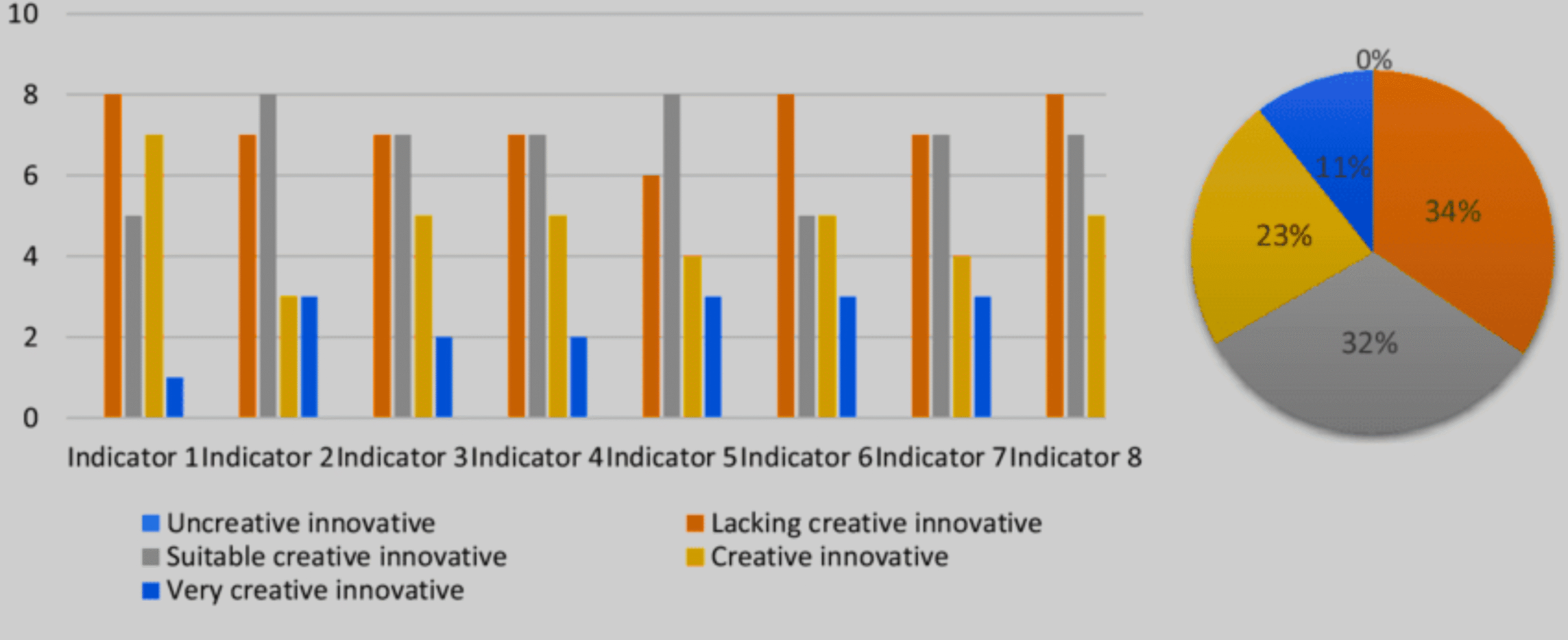
Based on data collected from various surveys, daydreaming in school is more common than people think! The below stats show just how common daydreaming and imagining at school is;
33. Roughly 45% of students surveyed admitted to daydreaming during class or lessons at least once a week. That’s practically half the classroom!
34. A Yale study showed that more than 69% of students feel bored at school, so their minds drift off.
35. A survey by the National Education Association found that 70% of high school students daydream at least once daily during class.
36. And 44% of the daydreamers admitted to frequently zoning out more than three times per class period.
37. But here’s the fact—another survey said 89% of students believe their daydreams inspire or positively impact them. So, while teachers see it as a distraction, daydreaming seems crazy familiar for students and may serve an essential creative purpose for their developing minds.
38. Since the 1990s, there’s been a concerning trend in schools – a decline in children’s creativity. Many attribute this to the pressure to conform, stifling kids’ natural imagination and innovation.
39. As kids grow older, seeing the numbers drop is disheartening. Back when they were 5, nearly all of them – a whopping 98% – were achieving high scores in tests measuring genius-level creativity. But by the time the kids hit 15, that number had plummeted to a mere 12%. Something is squashing their creative spark as they progress through school, which we must address.
Statistics On Creativity and Intelligence
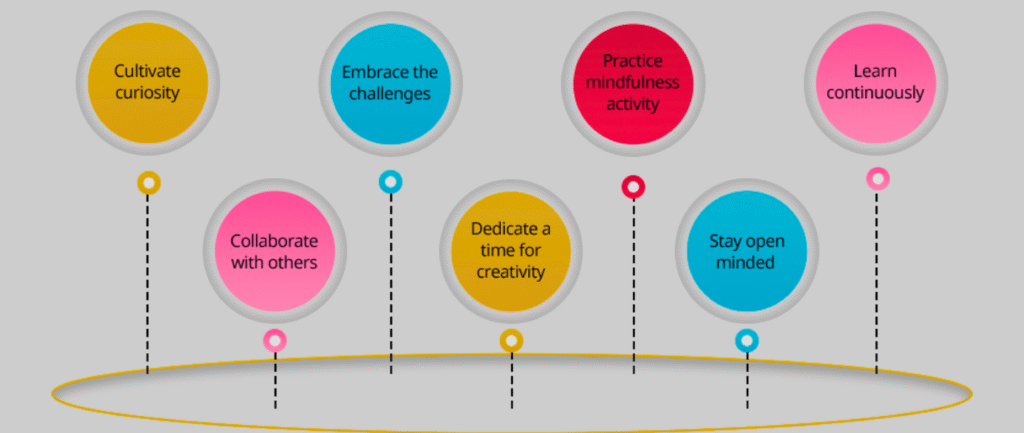
40. Want to give your creativity a severe kick? Here’s a fun fact: Research shows that creative output jumps by 60% when walking indoors or out. So, if you’re feeling stuck or needing inspiration, why not lace up your shoes and go for a stroll?
41. Speaking of creativity, did you know that 38.3 million Americans—about 30% of the US workforce—consider themselves part of the creative class? That number has steadily climbed over the past 20 years, increasing by more than 10%.
Alluring Facts About Being Creative
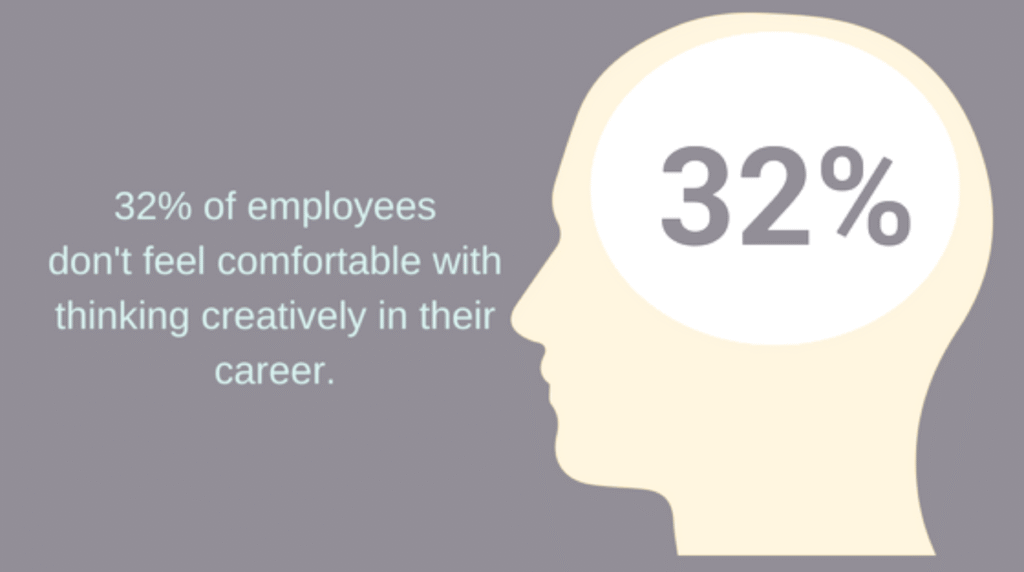
42. Unlocking creativity isn’t always easy, but it’s worth the effort! Did you know that achieving a creative breakthrough can take up to 10,000 hours of practice? That’s a lot of dedication, but the results can be truly transformative.
43. Here’s a fun tip: If you’re feeling stuck, try getting up and going for a walk. Research shows that walking can boost creative output by a whopping 60%!
44. Here’s another reason to prioritize creativity: It’s suitable for creating cool ideas and helps decrease anxiety and stress fantastically. Engaging in creative activities can be like a breath of fresh air for your mind and soul.
45. Finally, if you find yourself in a creative rut, don’t panic! Sometimes, the best thing you can do is give your mind and body a break. Taking a nap or stepping away from the problem can give you the space to return with a fresh perspective and tackle the challenge head-on.
Conclusion
Creativity and imagination aren’t just a flight of fancy—they’re powerful tools that help us turn our dreams into reality. It’s like having a crystal ball that allows us to envision the future we want for ourselves, whether finding happiness, discovering new passions, or achieving our wildest aspirations.
When harnessing the power of imagination, statistics and facts at our fingertips can be pretty handy. Keeping track of these numbers allows us to balance letting our imaginations run wild and staying focused on the tasks. Exploring creativity statistics is like having a compass to guide us through the maze of our thoughts and keep us on track toward our goals.
FAQs
Over half of the American population – a whopping 52% are creative. While creativity is a universal trait, it’s interesting to note that other countries might have slightly lower levels of creativity. But regardless of where you’re from, one thing’s for sure: everyone has the potential to be creative in their unique way. So, whether you’re an artist, a problem-solver, or a dreamer, embrace your creative spirit and let it shine!
When measuring creativity, it’s essential to consider various factors, including cultural norms and societal expectations. In cultures that prioritize masculine traits, men may be perceived as more creative, while in cultures that value community and collaboration, women may be seen as the creative ones. Additionally, some studies have found that men exhibit more extreme levels of creativity – very high or deficient – than women, who may show less variability in their creative abilities.
The creative process has five key stages: parts of conscious and unconscious thoughts. It involves preparation, illumination, incubation, evaluation, and implementation.
According to Research, factors contributing to creative thinking include knowledge, intelligence, personality, thinking styles, motivation, and surroundings.
Art is one of the most powerful expressions of creativity because it allows artists to convey their innermost thoughts, emotions, and experiences visually and deeply emotionally. Art is a universal language that transcends cultural and linguistic barriers, connecting people from all walks of life on a profoundly human level. It encourages us to see the world through different perspectives, stimulates our senses, and invites us to explore the depths of our creativity.
